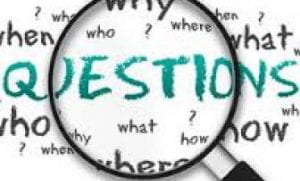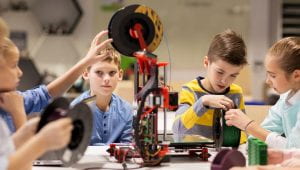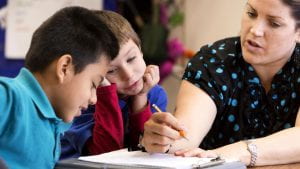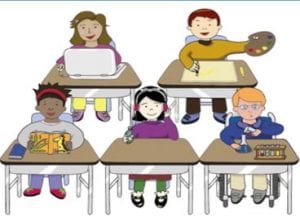Archive of ‘Social Studies’ category
 Traditional education has mainly focused on linearly transmitting information, from teacher to student, with the product being an assessment of what the student “knows.” However, when the class moves in a linear A-B-C-D fashion, information and concepts which are missed may go unnoticed. In order to expose gaps in knowledge and skill a new way of digesting material must be introduced. The C3 Inquiry method proposes just this kind of change.
Traditional education has mainly focused on linearly transmitting information, from teacher to student, with the product being an assessment of what the student “knows.” However, when the class moves in a linear A-B-C-D fashion, information and concepts which are missed may go unnoticed. In order to expose gaps in knowledge and skill a new way of digesting material must be introduced. The C3 Inquiry method proposes just this kind of change.
Ever since learning of the C3 Inquiry method, I’ve been a fan. I recently created a lesson which utilized the C3 Inquiry: “What Influenced the Creation of the U.S. Constitution?” located at http://www.c3teachers.org/wp-content/uploads/2016/06/C3-FINAL-Gov-Constitutional-Influences.pdf, Inquiry material created by Fairfax County Public Schools.
As I walked through the lesson plan, I began to realize, I was getting ahead of myself. Most students are not exposed to the inquiry method and if they are, I’m not sure they realize its purpose. Since I believe purposeful instruction is the key to student engagement and motivation, I began to really think through how I would introduce this method to my class. “How should I explain this?”, “Should I have a pre-review of the activity before I explain its purpose?”, or “Should I just introduce it “cold” and work through the explanation as the lesson progresses?”.
Although some of my answer(s) will come from the culture of the individual class, I came to the conclusion —it was best to begin at the beginning. I will introduce the C3 Inquiry lesson to the students by telling the students that we are going to engage in a C3 Inquiry and explain to them “why” we are going to engage in this method.
In my explanation of the “why”, I will point out that:
- C3 often takes students out of their comfort zones (because students are used to direct instruction),
- C3 stretches learning and provides many avenues to “show what you know”,
- C3 at its base prods students to ask questions and construct their own responses,
- C3 will help students think of the content in ways not before considered,
- C3 will help students learn “how” to ask their own questions, how to frame the questions, and how to ask the right questions; and,
- C3 trains students to be “question askers” and not just “question answerers”
For all of C3’s benefits it is also important to realize that even with the explanation of the process, the introduction of this foreign learning concept may give some students cause for pause.
That’s why probing students with open-ended questions, using student generated questions to drive additional thought, and forcing the use of evidence to support concepts, answers, and additional questions are keys to expanded thinking through Inquiry.
However, these techniques as well as “question asking” in isolation does not turn students into critical thinkers — this is why I will take care in being selective about the student questions I answer; to allow students to remain in the driver seat of the C3 lesson.
In addition, I will strive to share my own annotations to the Inquiry, showing students I’m learning with them, that I have questions too, and that I use the Inquiry method to help me process information.
In the end, I see myself using this inquiry method in my future classroom to deepen understanding of the various factors at play in the media both past and present, meeting SOL skills standards, and fulfilling Virginia Portrait of a Graduate requirements. I envision doing this by breaking the students up into discussion groups where they can fully apply the different thinking processes happening simultaneously during the Inquiry. Education is evolving, and a modern society deserves a modern way of thinking, a way of changing the dialogue from “what we know” to “how we know.”
 In a traditional learning environment, foundational content is presented by the teacher, digested by the students, and restated to the teacher by the students.
In a traditional learning environment, foundational content is presented by the teacher, digested by the students, and restated to the teacher by the students.
When students do not master that foundational content before they move on to the advanced concepts, they lose focus and purpose. They become strategic about ‘chasing points’ and performing just well enough to ‘not get hassled.’
Since most adolescents do not see the bigger picture of learning and engagement and are not intrinsically motivated by grades and points, the Project-Based Learning (PBL) model offers a way to maintain a high level of student engagement while assessing for mastery.
PBL is a comprehensive student-centered pedagogical approach to learning involving a dynamic classroom methodology. PBL is unlike traditional leaning because it does not move in lock-step with teacher directions. In traditional learning, students are presented with content by the teacher, the student, in turn, memorizes the provided content, and to demonstrate learning; the student offers the same content back to the teacher (i.e., standardized test).
In PBL, the teacher presents a problem or issue to be solved, the student identifies the key components, takes action based on identification, and to demonstrate learning, the student applies both prior knowledge and content knowledge to solve the problem.
In addition, PBL offers the unique feature of public presentation. Students present conclusions and solutions to the presented problem or issue publicly instead of in a silo of student-teacher communication. PBL’s design is distinctive because unlike traditional learning — which mainly focuses on linearly transmitting information, the PBL design focuses on deepening holistic understanding.
The instructional focus of PBL is student ownership. PBL affords students an opportunity to take ownership of their own learning as well as provide opportunities to collaborate with peers and solve practical problems utilizing a variety of tools such as data, research, and analysis. Further, there is an instructional focus on generating new and creative ideas, projects, and plans all while communicating and sharing solutions with real-world audiences publicly.
The PBL method also enables students to visualize the timeline of events and provides students with many avenues to ‘show what they know.’ By helping students visualize how events actually unfold, PBL enforces research, writing, discussions, and reflections that enforce problem-solving, critical thinking, and content application skills as final products for assessment.
The assessment focus of PBL is authentic assessment. Authentic assessment is a way for students to show they can use what they have learned in the real world. When students are given the option to produce a PBL assignment they are provided an opportunity to utilize all aspects of the standards-based grading model and demonstrate a depth of the level of mastery not found in any traditional test, however they still receive a traditional letter grade. Authentic assessments are interactive and have a substance that affects deeper and more holistic learning. Authentic assessment is where mastery of information means the content is internalized, connected, and learned.
The goal of PBL is to facilitate learning, foster self-directed learners, and craft critical thinking. The PBL Model also involves being a teacher-coach, letting go of preconceived notions of classroom responsibility, putting teacher control in check, and motivating students to uncover informational content with depth and breadth. PBL is more than a learning process; it is a human process, a social process, a process which produces indelible results.
 Project-Based Learning (PBL) is a comprehensive student-centered pedagogical approach to learning involving a dynamic classroom methodology.
Project-Based Learning (PBL) is a comprehensive student-centered pedagogical approach to learning involving a dynamic classroom methodology.
PBL activates student engagement – and engaged students acquire more in-depth knowledge because they are actively exploring real-world challenges and investigating authentic problems.
A hallmark of a PBL lesson is making student work public and what better way to meet that goal than through the utilization of technology.
After the presentation of the driving question, students often have to organize their thoughts. This can be done successfully through prewriting. During prewriting, the use of graphic organizers in a software version can help students color code their prewriting while organizing their thoughts around the driving question.
The further use of a color-coded graphic organizer may be helpful to visually keep track of ideas — ideas to keep, ideas to discard, and ideas to investigate further while they examine a variety of primary and secondary sources to aid in the development of their opinions. Sites such as Mind42, MindMap, and WiseMapping are excellent tools to help the student keep track of brainstorming ideas and theories in a graphic organizer format.
As the students continue to work through the PBL process they will undoubtedly be required to produce a written document. During the drafting and revision stages of the writing process, Microsoft Word and Google Read & Write offer familiar and user-friendly options for most students. These products offer students an effortless method to change the text by deleting, adding, and moving paragraphs to improve quality. Word processing software further offers students a simpler option to incorporate feedback, add transitional information, and correct mechanics. Lastly, electronic dictionaries and thesaurus should not be discounted as they offer additional options for students to edit the revisions for spelling corrections and enhancement of vocabulary choices.
If using Google Read & Write, this software offers the students an additional feature – text-to-speech. This program has an automatic speaking and grammar check embedded in the program which provides immediate feedback to the student, thereby, improving writing during this stage of development.
The ubiquitous nature of technology allows students to make their work public by sharing work along numerous multi-media platforms. First, collaborative tools such as Google Docs allow the students to share work at various stages of the project with both the teacher and peers, in order to gain feedback. This, in turn, allows the timely integration of feedback before the final publication. Second, an online writing portfolio can offer students, peers, and teachers access to works in progress in order to offer suggestions, feedback, ask questions, and talk about portfolio items; all enhancing the final student work product. Lastly, any number of media can provide for student presentation of the final PBL project. Software programs such as Microsoft PowerPoint, Google Slides, Canva, and Keynote (for MAC) — just to name a few.
Teachers can benefit through the use of technology, not only to provide quick feedback but also to assist students if they begin to stray from the topic, challenge students to reach further in their work, as well as anchor learning targets. Utilizing technology in the classroom can be fun and provide avenues of creativity not found in traditional projects —for both students and teachers.
 How often do students groan when a paper is handed back to them for revisions?
How often do students groan when a paper is handed back to them for revisions?
Maybe they handed in a mind map to chart their idea, a brainstorm paper to list out possibilities, or even a first draft of a longer composition piece thinking the assignment was complete —only for it to reappear.
Students typically view the writing process as a “one and done”. A document they are asked to produce, they produce it, and it’s over. Novice writers often do not contemplate the importance of the prewriting, drafting, and revision steps of the writing process.
Students may overlook these steps because they are not readily practiced in the classroom. While drafting a paper is commonplace providing students a roadmap to the drafting process is not; this includes prewriting and revision. However, just as it would be unreasonable to build a house without using blueprints, it is unreasonable to ask students to draft well thought out, meaningful papers, when they have not created the ‘blueprints’ for the paper. This is where instruction concerning the writing process is critical.
Prewriting is akin to this blueprint analogy. Since prewriting is a writing preparation process that takes place before drafting, the prewriting process increases a writer’s efficiency and clarity by helping organize thoughts, map out, plan, and brainstorm ideas. Some prewriting processes are short; however, most are involved and require mental organization. Prewriting is not concerned with writing mechanics such as grammar or structure; it is merely a process to take ideas and translate those ideas to paper, often in fragments.
When prewriting is complete, and thoughts are on paper, they can be organized into a draft. While this is usually the end of the writing process in the classroom — it should not be. The process of drafting and re-drafting is a continuous improvement process each person must cycle through to perfect a document. The re-drafting of a paper is an integral part of the writing processed called revision.
The process of re-drafting, or revision, is central to the art of writing and plays a vital role in the writing process. Revision allows the writer to crystallize the thesis statement and provide support for the developed ideas. This may involve significant changes to the papers thesis statement as it moves from larger concepts to more discreet ones. Revisions may include the deletion, shifting, or rewording whole paragraphs, adding additional supporting evidence, or minimizing or expounding upon the text for an idea.
A word of caution —care must be taken not to confuse revision and editing. Editing is concerned with writing mechanics such as grammar and spelling whereas revision is concerned with content understanding can clarity.
Taking the time upfront to walk through the writing process with students, providing a writing roadmap they can utilize to guide them through the writing process and allowing the number of revisions necessary to make the writing process meaningful for the students are all parts of teaching a successful writing process.
As time passes in the classroom, the writing process becomes a more seamless process, where students know what to expect and how to perform, in turn, gaining necessary skills which will last a lifetime.
 I read an interesting article yesterday about fact-checking. The article by Sam Wineberg (2015) entitled Why Historical Thinking is Not about History reiterated a point we need to drive home to our students, information needs to be verified — this is especially true about information found on the internet.
I read an interesting article yesterday about fact-checking. The article by Sam Wineberg (2015) entitled Why Historical Thinking is Not about History reiterated a point we need to drive home to our students, information needs to be verified — this is especially true about information found on the internet.
Wineberg talks about a Virginia textbook author who included unverified information from the internet in her 4thgrade Virginia history textbook. He also mentions a group of California teachers who inadvertently convinced some students that the Holocaust was ‘propaganda’ and a ‘hoax’ by providing the students comparative information retrieved from the internet as a sole source.
As Wienberg says, “The Internet has obliterated authority” (p. 14) and everyone and anyone can fall victim to easy information. Easy information, which is free floating, a top Google search result, not cited, etc. is easy to grab, absorb, and retell as fact. But we need to be careful about the redistribution of internet information and teach our students to examine sources critically.
To this point, Wienberg (2015) speaks of the need to train everyone to think like a historian in order to avoid such conundrums of information overload in the digital age. We can do this by equipping students with the skills to think like historians. By having students investigate primary sources, dig deep into the origins of information, and act with civic intelligence we will help students filter out the noise and focus on true and valid information.
A dense social studies education both implicitly and explicitly provides this foundational dexterity. This digital citizenship will help students through the informed decision-making process and perhaps even take the confusion (and argument) out of sifting through the copious amounts of information found on the internet.
In the end, training students to think like a historian will train them to make decisions through the lens of critical examination — for all information presented throughout their lives. From reading the newspaper and social media posts to making decisions regarding finances and career; when a student is able to ferret out accurate information they are able to make informed decisions. It is our job as educators to teach students the application of skills to be successful in life’s endeavors.
 As the nation has evolved and industrialized, the need for a social studies education remains critical. The original design of promoting civic competence is still foundational; however, this multidisciplinary field interweaves history, political science, economics, and geography to create a unique platform for integrated study.
As the nation has evolved and industrialized, the need for a social studies education remains critical. The original design of promoting civic competence is still foundational; however, this multidisciplinary field interweaves history, political science, economics, and geography to create a unique platform for integrated study.
The discipline takes a more holistic view today than ever before as social studies today concerns itself with academic rigor, data collection, analysis of facts, the collaboration of thought, and strong decision-making and problem-solving skills in addition to its historical goals. However, to keep students engaged in social studies as a discipline, maintaining traditional pedagogical survey approaches may not be the best option.
The emergence of the inquiry method has been significant in the ever-evolving understanding of ‘social studies’ because human inquiries, general arguments, holistic assumptions, and individual points of view are at the heart of what makes social studies a profound and rewarding scholarship.
Simply regurgitating facts is not studying social studies; it is memorizing facts which will soon be forgotten. This type of study is akin to the “attic” philosophy, which postulates that memorization is like storing information in one’s brain in the same way one may store furniture in an attic. Indeed, this may not be the best approach when seeking to create a historical thinking framework.
However, when students learn through the lens of various inquiries, such as visual inquiry, critical inquiry, and moral inquiry, historical thinking becomes more relevant, more applicable, and converts to process rather than function.
Inquiry leads students through discussion. Teachers don’t act as an authority on the topic but allow the relevant questions to become opportunities for students and teachers to do history themselves, to encounter the past in all its messy, uncertain, and elusive wonder.
Although it is realistic to assume that all students won’t become historians and that all students will not necessarily reach the level of trained historical thinking with which professional historians work their craft, students need to find ways to execute the basic steps of inquiry which develop a historical mindedness.
Specifically, by learning cognitive habits, such as questioning, connecting, sourcing, making inferences, considering alternate perspectives, and recognizing limits to personal knowledge, students create habits students to carry with them not only to other classes but into the workplace.
Further, such cognitive habits will ideally become invaluable to students as they navigate the constant bombardment of information. Developing these skills will aid students in navigating the shoals of unreliable/solid, false/true, dependable, and rickety information which floods society every day. When a student has a substantial social studies education, steeped in inquiry they are more prepared for sifting the wheat from the chaff.

Businesswoman holding earth front of blackboard
The desire for an educated populous began in America before the nation was officially born. As an American colony, Boston Massachusetts would be the first to offer a publicly supported school. In 1635 The Boston Latin School was opened with the primary objective of college preparation for young boys.
In 1647 the Massachusetts Bay Colony General Court made declarations for public schools throughout the colony for the primary purpose of ensuring Puritan children could read the bible as well as educating virtues of family, religion, and community.
Over the last 383 years, education has evolved from the desire for religious literacy to a public system designed to educate the masses in a variety of subjects and for a variety of purposes. However, the core of a social studies education has ebbed and flowed with the needs of the nation.
From a discipline crafted to ensure a fledgling nation survived to a discipline sharpened to create nationalism in a nation torn apart by civil war, social studies has refined its discipline to practice evaluation, analysis, and application of contemporary conditions that shape not just the nation but the world.
As society becomes more complex, the need to integrate multiple perspectives, from multiple fields is necessary. In keeping with the complexity of society, social studies as a discipline will too become more complex. Since no single subject can provide an answer to the multifaceted issues facing a 21stcentury populous, social studies offer a holistic way to prepare students to view societal issues from an informed viewpoint.
A unique value found in an informed viewpoint is in the practice of historical empathy. Social studies provides the ability to clarify personal beliefs and assertions, and become a learned decision maker in not only matters of democracy but in matters of a democratic world. Social studies offers the unique perspective and essential responsibility of thinking in terms of the human experience. The discipline of social studies will continue to evolve in step with the nation as We The People continue to unpack what it means to be a civic-minded citizen, a steward of the nation, and a student of human experience. After all, the study of social studies is the study of being human.
And students like the study of being human. When surveyed, students are in favor of a social studies education and students see far-reaching benefits of a social studies education. Benefits which extend past the content area and surface in transferable skills and abilities; such as the ability to form and support opinions, evaluate concepts and ideas, develop critical thinking skills, strengthen reading comprehension, and unearth the true role(s) of an American citizen. However, without social studies, without examining the world through the lens of evidence-based discovery, a student ultimately begins to believe a Google search result is bond.
I can think of no subject area taught which does not have its roots in the broad foundation of the social studies discipline. To have a social studies education is to have a holistic human education cemented into the skill set(s) most desired in the workplace. Success is not measured in singularity, and I can think of no better multidisciplinary education to give to a student than a social studies education.
The promotion of civic aptitude and the installation of socially acceptable values as core features of social studies was vital to the experimental Republic in creating an active citizenry and has remained vital to continue that strong citizenry.
 Humans are unique creatures. The advancement of society from the nomadic tribes of yesteryear to today’s technically connected epicenters has depended mainly on human’s ingenuity. How did humans learn to be so creative, resourceful, and knowledgeable? Was it through a well thought out academic framework? Was it trial by fire? Or a combination of numerous influences all as unique as the individuals themselves?
Humans are unique creatures. The advancement of society from the nomadic tribes of yesteryear to today’s technically connected epicenters has depended mainly on human’s ingenuity. How did humans learn to be so creative, resourceful, and knowledgeable? Was it through a well thought out academic framework? Was it trial by fire? Or a combination of numerous influences all as unique as the individuals themselves?
A plentiful cache of learning theories has attempted to answer those questions, and it is safe to say that no sloe theory tells us exactly how humans learn. However, several have been well researched, thoroughly documented, and soundly applied providing confidence in the broad elements.
Varied instruction takes into consideration the theories of multiple intelligence, constructivism, humanistic psychology, and cognitive development through the idea of neurodiversity. Boiled down to its most basic points, neurodiversity creates a complex educational landscape, one in which the educator attempts to navigate through more individualized instruction.
Individual difference variables are the drivers of a classroom of varied instruction. Honing in on those elements which make each learner unique and creating a curriculum which caters to those individual learning differences is a tall order. In an education system which is designed to education enmass, it may seem that the ‘teach to the average’ method which was employed for an industrialized America is now the system with which we are stuck. This is not the case. Although it seems impossible for mass education to accommodate one-on-one individualized education, detailed planning and first-hand knowledge of students makes the impossible into the possible.
In a diverse learning environment where each learner’s strengths and weaknesses are known, measured, supplemented, and assisted; the individual learner has a chance. With the theory of varied instruction in mind, reviewing cognitive processes, how the brain learns, how the developing brain is posited to learn multiple things, in multiple ways, at multiple times, is the key to successful, motivated, autonomous learners. Bottom line, providing ‘voice and choice’ to accomplish the same goal (write an essay, create a mind map, drawn a comic strip) will accomplish the same objectives.
What does varied instruction look like in your classroom?

Globalization is not a new concept; in fact, modern industrialization can be marked by 19th-century advancements in automation. The ability to mass produce items created a global trade market which opened up new economies. The 20th century ushered in more than trading goods between different countries—it offered a glimpse into commercial integration. With the advent of the internet in 1990 advancements in technology have created an interconnected 21st-century world (1). From globalized business to connection through social media, technology has taken an insulated population and created a global population.
This is especially apparent when we look at our classrooms. Students have a constant online presence, interacting with people from around the world on a daily basis. As educators, we have an opportunity to harness a student’s interest in other people and a student’s curiosity about other cultures to create cultural competence for success in the ever complex 21st-century world. Further, as educators we are guided by the United States Department of Education’s (ED) “mission to promote student achievement and preparation for global competitiveness by fostering educational excellence and ensuring equal access” (2) and encouraged by the United Nations Sustainable Development Goals to educate students about “the global challenges we face, including those related to poverty, inequality, climate, environmental degradation, prosperity, and peace and justice” (3). Although the purpose is clear, the “why” is sometimes opaque.
So why do our students need global competence? Twenty-first-century students exist in a diverse and interconnected world. Mass migration erases borders, concerns over climate instability create community, and constant social and technological interconnection amalgamates cultures. This means students must learn global competence to discover ways to live harmoniously in multicultural communities, thrive in a changing labor market, and use media platforms effectively and responsibly. Teaching students to investigate worlds beyond their immediate environment promotes cultural awareness and respectful community interactions as well as affords respectful communication with diverse audiences (4).
This integrative outlook on the world is not just a collection of independent skills; it is both a disciplinary and interdisciplinary understanding of the globe as a system (4). This interdisciplinary understanding needs to be purposeful, grounded, interactive, and thoughtful (4) to keep students engaged in the learning process. Student engagement is key in any learning process but is especially important when students are tackling concepts outside of their comfort zones. Collaborative learning, and working through the lens of empathy, can help students absorb the dissonance in these topics.
Zepke & Leach, 2010 note that “When institutions provide opportunities for students to learn both autonomously and with others, and to develop their sense of competence, students are more likely to be motivated, to engage and succeed.” (5). Educators can have students work independently and together to create a habit of global competence by asking students to complete such assignments as “write an argument concerning the promise and period of globalization, or a narrative on life of a migrant child, or an explanation of how communication technologies work to facilitate democratic movements in a given region” (4). Asking the students to engage in discussions about complex problems and work collaboratively to find solutions helps them stay on task by tapping into the emotion which drives cognition (Schwatrz, 2016); these are critical metacognitive skills needed to internalize concepts of a globalized system.
The future is here, globalization is real, and 21st-century students need competencies in order to work with people from different cultures, on global teams, and with international consumers. Students need to envision, tackle, and solve problems in ways not yet conceived, and of course the competition in the global business arena is only becoming more competitive. By engaging students through addressing global challenges, globalizing the context for learning, connecting universal themes, illuminating global knowledge and history, and learning through international collaboration (4), we can ensure that our students are ready for the future that lies ahead.
 Reading and writing are core competencies in not only every single academic subject but in every workplace. In today’s complex, information, and data-driven society, the need to read content and write as a form of expression is even more critical. Unfortunately, as the need for these basic skills increase, the ability of our secondary students to competently perform said tasks decreases. As workplace texts become more complex, the texts with which we train our future generations in both primary and secondary schools become easier. In fact, “employers rank reading and writing as top deficiency’s in new hires” (1). Moreover, a sizeable sum is spent by employers in the remediation effort to ensure new hires are proficient in basic reading and writing skills.
Reading and writing are core competencies in not only every single academic subject but in every workplace. In today’s complex, information, and data-driven society, the need to read content and write as a form of expression is even more critical. Unfortunately, as the need for these basic skills increase, the ability of our secondary students to competently perform said tasks decreases. As workplace texts become more complex, the texts with which we train our future generations in both primary and secondary schools become easier. In fact, “employers rank reading and writing as top deficiency’s in new hires” (1). Moreover, a sizeable sum is spent by employers in the remediation effort to ensure new hires are proficient in basic reading and writing skills.
Why are secondary students graduating from high school without basic competencies in reading and writing? The reasons are as plentiful as the student’s individual differences; however, one universal strategy to remedy the deficiencies is to teach both reading and writing in each classroom as both a method of instruction and intellectual activity (2).
For reading, incorporating multiple literacies into the classroom helps students learn to mentally organize information and learn key vocabulary. Teaching writing can pose more challenges for educators than teaching reading, simply because writing is a time-consuming craft. However, there are five guiding principles regarding writing instruction (2):
- Teacher: The teacher is the facilitator of the process and an expert in the content
- Time: Time must be made for writing. Because writing is a process of drafting and re-drafting, there must be ample time dedicated to the task of writing.
- Technology: Technology can be used to help students in the writing process. Software such as Microsoft Word and Google Classroom can change the entire landscape of writing for countless students.
- Assessment: Measure student growth in writing. Although this is a difficult and somewhat subjective task, the assessment of growth in writing is critical to helping students find strategies to make them better writers.
- Practical Strategies: Implementing strategies such as pre-writing, drafting, revising, and editing assists the student in the “how” of writing
Once students learn that sitting down and writing a paper for submission in one sitting is virtually impossible (unless that is what the assignment calls for), then they will learn that part of the process of writing is patience and part of the process is reflection. These guiding principles of teaching writing improve student learning.
In short, a teacher preparation program requires a course in reading and writing in the content area for each classroom because students cannot be college ready, workplace-ready, or world ready if they cannot read and write. Effective writing is vital for the classroom, and the workplace (2). Once students are fluent readers, they often read for pleasure, and this correlates strongly with academic achievement (1), translating into higher salaries and more job satisfaction in adulthood. It is the responsibility and the opportunity of each educator from each discipline to equip students with the tools they need.
 Traditional education has mainly focused on linearly transmitting information, from teacher to student, with the product being an assessment of what the student “knows.” However, when the class moves in a linear A-B-C-D fashion, information and concepts which are missed may go unnoticed. In order to expose gaps in knowledge and skill a new way of digesting material must be introduced. The C3 Inquiry method proposes just this kind of change.
Traditional education has mainly focused on linearly transmitting information, from teacher to student, with the product being an assessment of what the student “knows.” However, when the class moves in a linear A-B-C-D fashion, information and concepts which are missed may go unnoticed. In order to expose gaps in knowledge and skill a new way of digesting material must be introduced. The C3 Inquiry method proposes just this kind of change. In a traditional learning environment, foundational content is presented by the teacher, digested by the students, and restated to the teacher by the students.
In a traditional learning environment, foundational content is presented by the teacher, digested by the students, and restated to the teacher by the students. Project-Based Learning (PBL) is a comprehensive student-centered pedagogical approach to learning involving a dynamic classroom methodology.
Project-Based Learning (PBL) is a comprehensive student-centered pedagogical approach to learning involving a dynamic classroom methodology. How often do students groan when a paper is handed back to them for revisions?
How often do students groan when a paper is handed back to them for revisions? I read an interesting article yesterday about fact-checking. The article by Sam Wineberg (2015) entitled Why Historical Thinking is Not about History reiterated a point we need to drive home to our students, information needs to be verified — this is especially true about information found on the internet.
I read an interesting article yesterday about fact-checking. The article by Sam Wineberg (2015) entitled Why Historical Thinking is Not about History reiterated a point we need to drive home to our students, information needs to be verified — this is especially true about information found on the internet. As the nation has evolved and industrialized, the need for a social studies education remains critical. The original design of promoting civic competence is still foundational; however, this multidisciplinary field interweaves history, political science, economics, and geography to create a unique platform for integrated study.
As the nation has evolved and industrialized, the need for a social studies education remains critical. The original design of promoting civic competence is still foundational; however, this multidisciplinary field interweaves history, political science, economics, and geography to create a unique platform for integrated study.
 Humans are unique creatures. The advancement of society from the nomadic tribes of yesteryear to today’s technically connected epicenters has depended mainly on human’s ingenuity. How did humans learn to be so creative, resourceful, and knowledgeable? Was it through a well thought out academic framework? Was it trial by fire? Or a combination of numerous influences all as unique as the individuals themselves?
Humans are unique creatures. The advancement of society from the nomadic tribes of yesteryear to today’s technically connected epicenters has depended mainly on human’s ingenuity. How did humans learn to be so creative, resourceful, and knowledgeable? Was it through a well thought out academic framework? Was it trial by fire? Or a combination of numerous influences all as unique as the individuals themselves?
 Reading and writing are core competencies in not only every single academic subject but in every workplace. In today’s complex, information, and data-driven society, the need to read content and write as a form of expression is even more critical. Unfortunately, as the need for these basic skills increase, the ability of our secondary students to competently perform said tasks decreases. As workplace texts become more complex, the texts with which we train our future generations in both primary and secondary schools become easier. In fact, “employers rank reading and writing as top deficiency’s in new hires” (1). Moreover, a sizeable sum is spent by employers in the remediation effort to ensure new hires are proficient in basic reading and writing skills.
Reading and writing are core competencies in not only every single academic subject but in every workplace. In today’s complex, information, and data-driven society, the need to read content and write as a form of expression is even more critical. Unfortunately, as the need for these basic skills increase, the ability of our secondary students to competently perform said tasks decreases. As workplace texts become more complex, the texts with which we train our future generations in both primary and secondary schools become easier. In fact, “employers rank reading and writing as top deficiency’s in new hires” (1). Moreover, a sizeable sum is spent by employers in the remediation effort to ensure new hires are proficient in basic reading and writing skills.